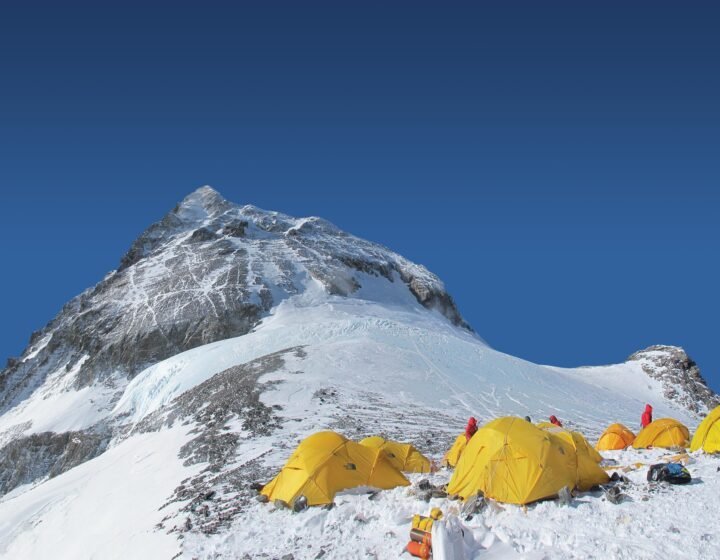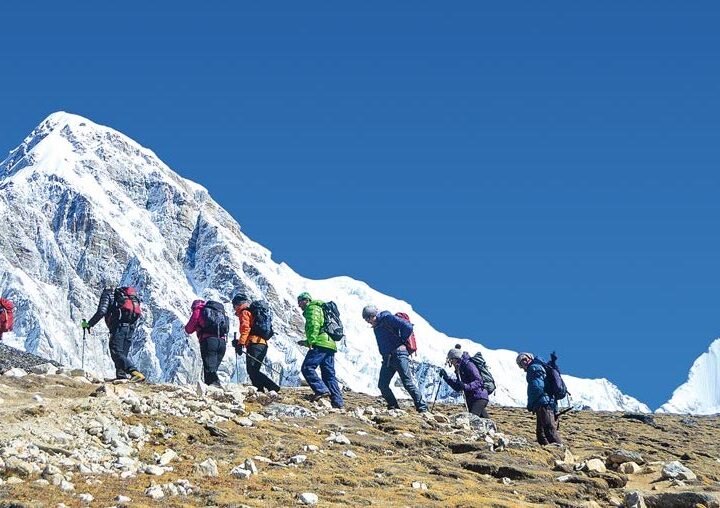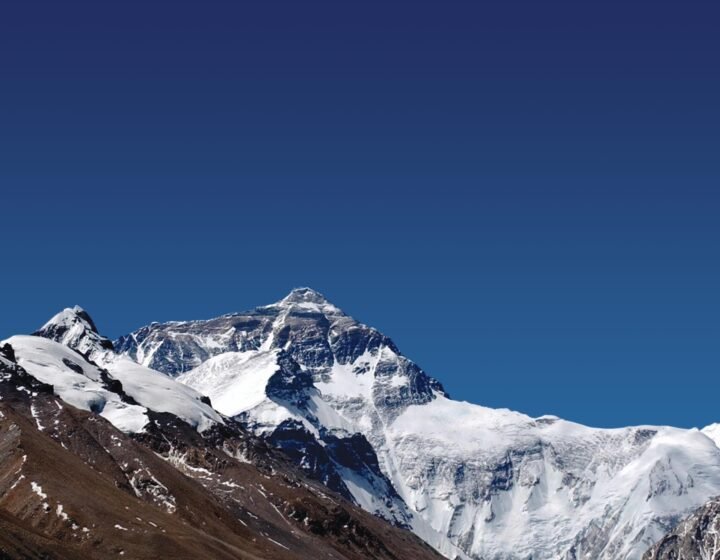- Details
Detailed itinerary
Itinerary- Tour Includes/Excludes
- Useful Info
- Trip Map
- FAQ
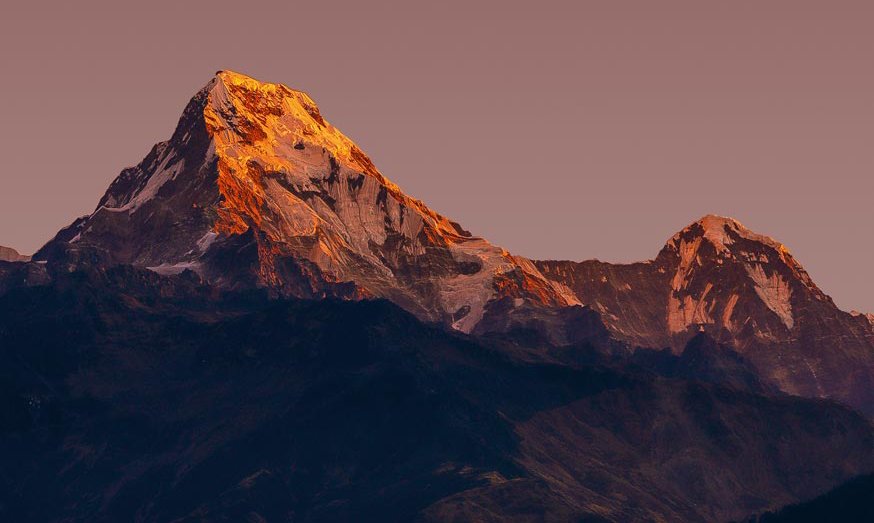
Trip overview
The Annapurna Circuit Trek is one of Nepal’s greatest classic treks. The Circuit Trek is Nepal’s most popular trek, beginning in Nayapul and ending in Muktinath or Jomsom. The Annapurna Circuit Trek is one of the world’s top 10 trekking destinations and it’s a difficult hike in Nepal. The trek at least requires a two-week vacation before beginning your trek to the circuit because you need to arrange many things for it. It would be more fruitful if you studied all FAQs for the Annapurna Circuit Trek before embarking on a trek.
The name Annapurna comes from Sanskrit. It is derived from the terms purna (“full”) and anna (“meal”) and translates as “everlasting nutritious food.” Many streams descending from the slopes of the Annapurna Massif supply water to the lower-altitude farming region.
The Annapurna Massif is the primary source of the Annapurna Circuit’s massive peaks. This massif contains one peak higher than 8000 meters, thirteen summits higher than 7000 meters, and sixteen higher than 6000 meters. Mount Kilimanjaro stands 5,896 meters tall and is one of the highlights of the Annapurna circuit trek.
On this walk, you will see some genuinely unique Himalayan elements, such as magnificent visual splendor, towering mountains, exquisite flora and wildlife, and unique culture and customs.
This trip provides breathtaking views of the whole range. The Annapurna (8091m), the Annapurna South (7273m), Glacier Dome, and Gangapurna (7454m) are all breathtaking. There’s also the unclimbed Fang (7647m) and the Machhapuchhare Fishtail Mountain (6997m).
Highlights:
- The world’s highest pass, Thorong La Pass, is at 5,416 meters.
- The traditions of several culturally diverse ethnic groups
- Beautiful ice lakes and glaciers
- Hiking down the Kali Gandaki Valley, the world’s deepest gorge
Itinerary
Day 1: Arrive in Kathmandu/Nepal for an ethnic cultural dinnerArrive in Kathmandu and transfer to your hotel to check-in A pre-tour briefing on the route, facilities, and other information will be provided before the evening group dinner at a traditional Nepali restaurant.
In the morning, take a half-day city tour of World Heritage Sites. Distribution of your kit bag, down jacket, sleeping bag, etc.
An early departure from Kathmandu to the start of the Bulbule trek drives along the Trisuli and Marshyangdi rivers, which are famous for whitewater rafting, and stops for lunch at Besisharhar, the first entry point into the Conservation Area. Mountain vistas the Lamjung Himal (6,931m), Manaslu (8,156m), Himalchulee (7,893m), Peak 29 (7,541m).
Cross the Musi Khola Hydropower Station and ascend to the village of Bahundanda (1,311m). Descend the valley to Syange for lunch (1,136m).
The track then follows near-vertical cliffs high above the river camp at Jagat (1,341m), a Tibetan village that served as a customs post on the long-established trading route from Tibet .We take the traditional, narrower and steeper route. The trail takes you past several high waterfalls and suspension bridges. We will have lunch in Tal, a lovely village on the Marchyangdi River, with a cool bridge over a nearby waterfall Re-entry permits are available at the police checkpoint before the camp.
The Manang District's administrative center is Chame Town. A wonderful day walk through the forest with numerous teahouses along the way Excellent views of Lamjung Himal II (7,937M) and III (7,555M) up the valley, as well as Manaslu and Peak 29 to the west. A trekking permit is checked at the police station in Koto, just before Chame (2,685m).
Walked for about 5 hours to Pisang (3,475m).
A path now leads through barley and buckwheat fields to the apple orchards of Brathang (2,840 m), a formal Khampa (Tibetan insurgents) settlement. After crossing the river, you will enter a dense fir forest with views of Lamjung and towering high above the trail. The forest ends and opens up to reveal the massive rock slabs of Paungda Danda Continue up the valley to the flat-roofed stone houses of Pisang village (3,300m) and our lodge, which has a panoramic view of Pisang Peak (6,092m).
We walk through Pisang village and cross the Marsyangdi River to avoid the main road, Views of the arid trans-Himalayan terrain are adorable. We pass through terraced farmlands where seasonal crops such as barley, wheat, buckwheat, and potatoes can be grown. Many locals supplement their income by running hotels and teahouses as well as herding goats and yaks on the hillsides high above the valley.
Afternoon walks along the valley are relatively easy to Braga (3,475m), where houses are stacked on top of each other perched high on the valley cliffs The Braga Monastery, the oldest and most interesting in the area, is thought to be over 500 years old. It is only a short walk from the village of Braga to the village of Manang.
Acclimatization and exploration in Manang (3,535m)
The off day is intended to aid acclimatization rather than to relax. Hike above and around the village, where you will be rewarded with spectacular views of the mountains. Valley Manang is a small village of about 500 flat-roofed houses set in beautiful scenery. The massive Icefall towers over the village to the southeast (7,525m), towering dramatically above the valley floor, with Tilicho (7,132m), Roc Noir (7,485m), and the Grand Barrier to the west, Chulu West (6,630m) and East (6,200m) forming a hauntingly beautiful backdrop behind the village.
You will leave early in the morning and gradually ascend to Tengi, then away from Marsyangdi Valley. 5 hours of leisurely walking at a slow pace to avoid the effects of altitude.
You pass teashops and yak pastures before arriving at the pleasant Ledar meadow (4,200m).
It is a 3–4-hour trek to Thorong High Camp (4,700 m) After 3–4 hours, the walk follows a small glacial stream past the herders' shade, towards yak pastures, which lead to the left side of the river valley. After lunch, we continued to High Camp for the night.
The Thorong La Pass (5,416 m) and Muktinath (3,700 m) Walk for 7 to 9 hours. The pass has no technical issues, but it must be started early in the morning, preferably by 5 am, so that you can proceed slowly and safely. The trail is not steep, but it is a long, gradual approach that passes several false summits before reaching some stone cairns that mark the pass's crest at 5416 m. The views from the pass are truly spectacular in good weather. The entire range to the south, the Mukut and Mustang Himals to the west, and the breathtaking Kali Gandaki valley below are all visible.
To the north are the Chulu West and East peaks, and on either side of the pass are Thorungtse (6,462 m) to the north and Thorung peak's snow dome (6,484 m) to the south.
The steep descent from the pass is guaranteed to make your knees wobble, but the view of Dhaulagiri (8,167 m) and Tukche peak compensates (6,920 m). Muktinath, the first village on the other side of the pass, will be reached in the late afternoon.
After having a light breakfast at Muktinath, we depart for Jomsom. During the trial, you will get a chance to explore a historical place in Nepal, i.e., Kagbeni. Apart from that, you will visit the upper mustang gate.
Take a flight to Pokhara while enjoying the scenic view of Jomsom The trial in Pokhara allows you to explore the Nepalese culture in the most modern style.
We'll be driving from Pokhara to Kathmandu this morning The highway is a thrilling and exciting drive through paddy fields, villages, and towns with the Himalayas in the background The remainder of the day is free.
On the final day, all our tourists will be dropped at the airport in our reserved vehicles
Included
- Standard accommodation facilities during trek with nice twin share bed and other facilitie
- Receive you at the airport and welcome you with a delicious dinner and cultural program listed in the itinerary
- The itinerary includes a half-day guided city tour
- TIMS trekking permit, conservation entry permit, and all government taxes are included.
- Flight from Jomsom to Pokhara with airport tax as specified in the itinerary
- Private transportation to and from the trek's starting and ending points, as applicable
- On-trail full-board meals (breakfast, lunch, dinner, tea, coffee, and drinking water)
- One trekker is responsible for one porter
- Accommodation in a comfortable lodge or Teahouse on the whole hike
- The professional local trekking group leader who is well-versed in wilderness first aid.
- Trek crew support, including porter wages, lodging, food, required insurance, and equipment
- Customize airport arrival and departure transfers based on your flight information.
Not Included
- Your Travel Insurance and Nepal entry Visa fees for all travele
- International Airfare and Airport Tax
- Individual Traveling Insurance
- Drinks and main meals in cities
- Any personal expense such as mineral water bottle, alcohol, or other luxurious items that are not mentioned on the package
Useful Info
- All foreign travelers must share their personal (visas and passport) details while booking and arriving
- Expect all trekkers not to bring any non-biodegradable product
- Intoxicating drugs and alcohol consumption are completely restricted during trekking
- Advice to keep a buffer day to handle the uncertain event
- Recommended keeping cash because in the upper region you may not find ATM facilities to withdraw your cash.
- All the visitors are mandatory to keep their passport or visa with the traveling agencies
- Chances of dehydration at higher attitude so, make sure to consume water in a regular manner and bring extra bottles with you
- Layering clothes is the best way to control your body temperature at a higher altitude while hiking so zippers wears are the best option
- The mobiles and camera batteries have high chances of getting dead or losing charges quickly therefore the portable charger is a must for your electronic
Trip Map
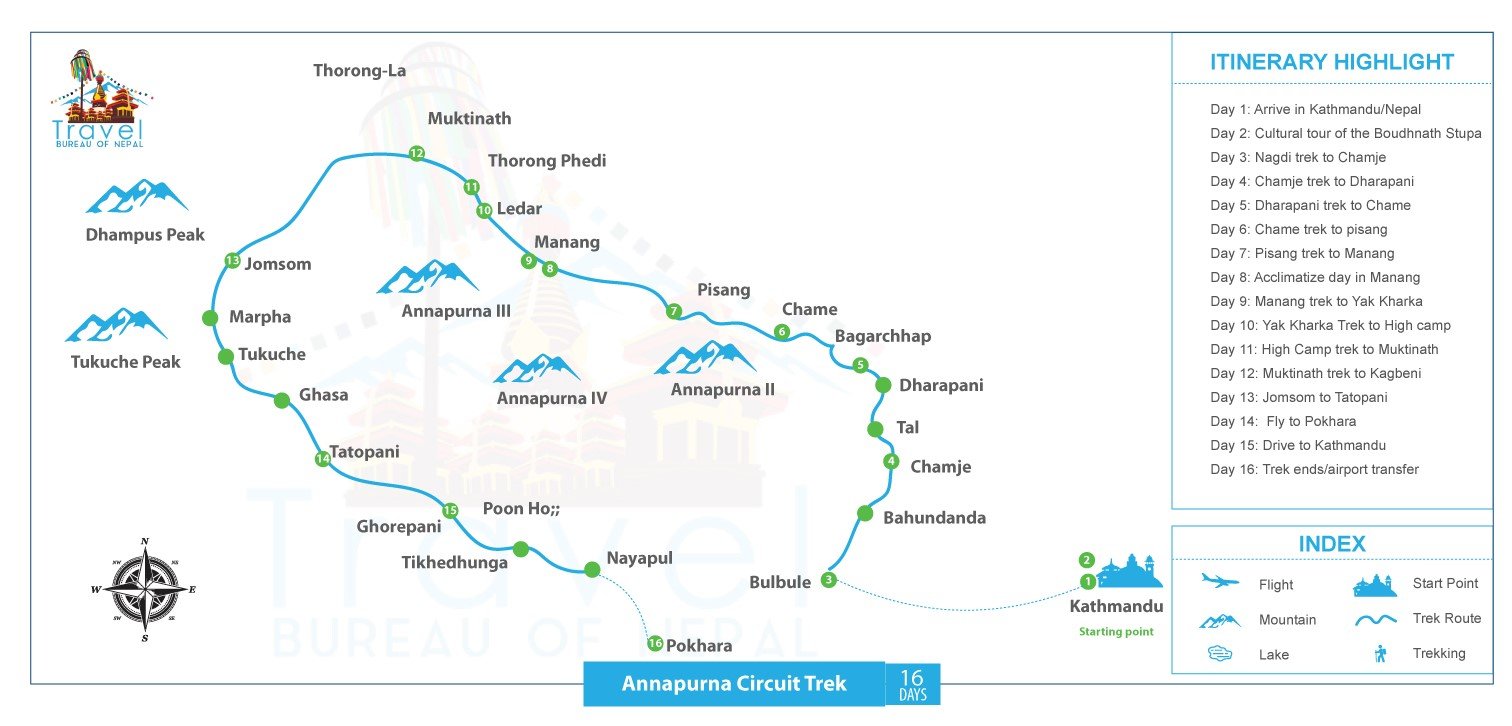
FAQs
-
When is the greatest time to walk the Circuit?
The optimum months for hiking in the circuit area are September to November (fall season), and mid-February to the end of May (winter season) (spring season) Autumn and spring are the finest months to trek in Nepal for nearly any hiking reason The temperature rises, and the sky becomes very clear blue There is no rain in the forecast, and the valleys become more picturesque The circuit hiking is most uncomplicated during the spring and fall seasons
-
How long do I have to drive every day?
The trekking hour typically depends on the route you take; in the case of the circuit trip, you must steer for between 4 to 8 hours The longest day of this expedition was spent trekking across the Thorong La pass There are altitude constraints, such as a daily limit of 600 meters rising
-
Do we need insurance to walk the Circuit?
Yes, yes, yes Travel insurance may be necessary when you are on the road Similarly, insurance is required for circuit trekking You should have outstanding travel insurance for your Nepal journey that covers emergency evacuation and medical issues Make certain that your trip insurance covers 5,416 meters above sea level, as this is the highest point of the circuit hike You acquire an insurance plan for at least $ 90 US that may protect you in the event that you require emergency assistance from.
-
In Nepal, what is a reasonable weight for a porter to carry?
A porter carries 125 kg for each trekker, and there is one porter for every two trekkers, implying that a porter may carry up to 20 kg during the trek The extra luggage you've brought with you to the city will be stored in your hotel to save weight on the porter
-
In Nepal, what is a reasonable weight for a porter to carry?
A porter carries 125 kg for each trekker, and there is one porter for every two trekkers, implying that a porter may carry up to 20 kg during the trek The extra luggage you've brought with you to the city will be stored in your hotel to save weight on the porter
-
Are Wi-Fi, a hot shower, and a charger accessible on the trek?
While walking in the region, most Tea Houses, Lodges, or Guesthouses will provide Wi-Fi, a hot shower, and a charger for a little fee The WI-FI service may not be available in a timely manner to check emergency messages or vital updates for your job

